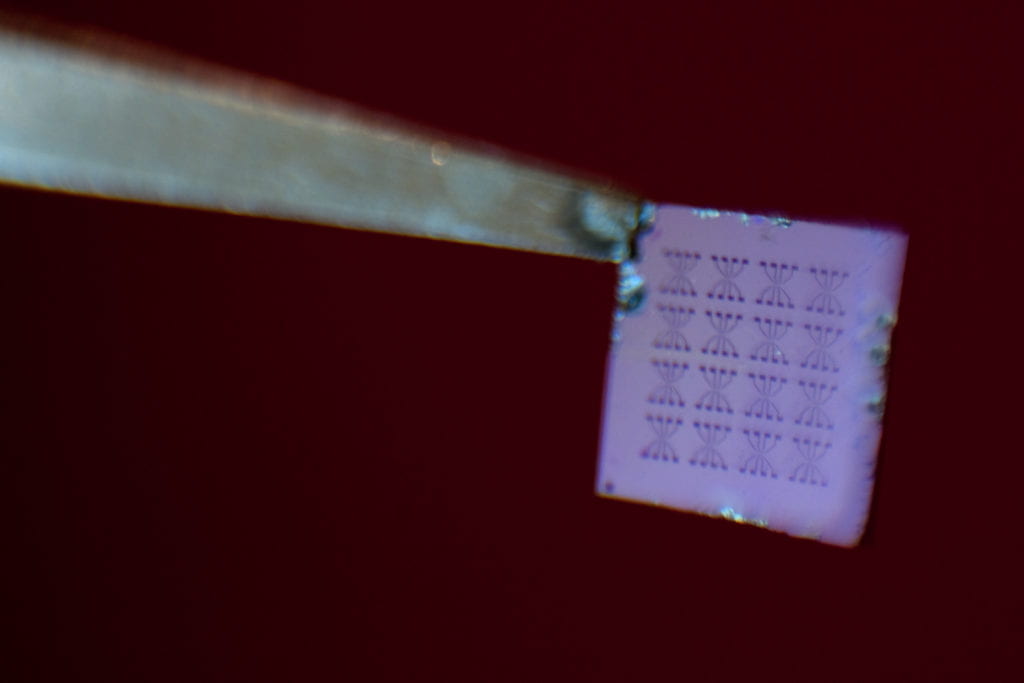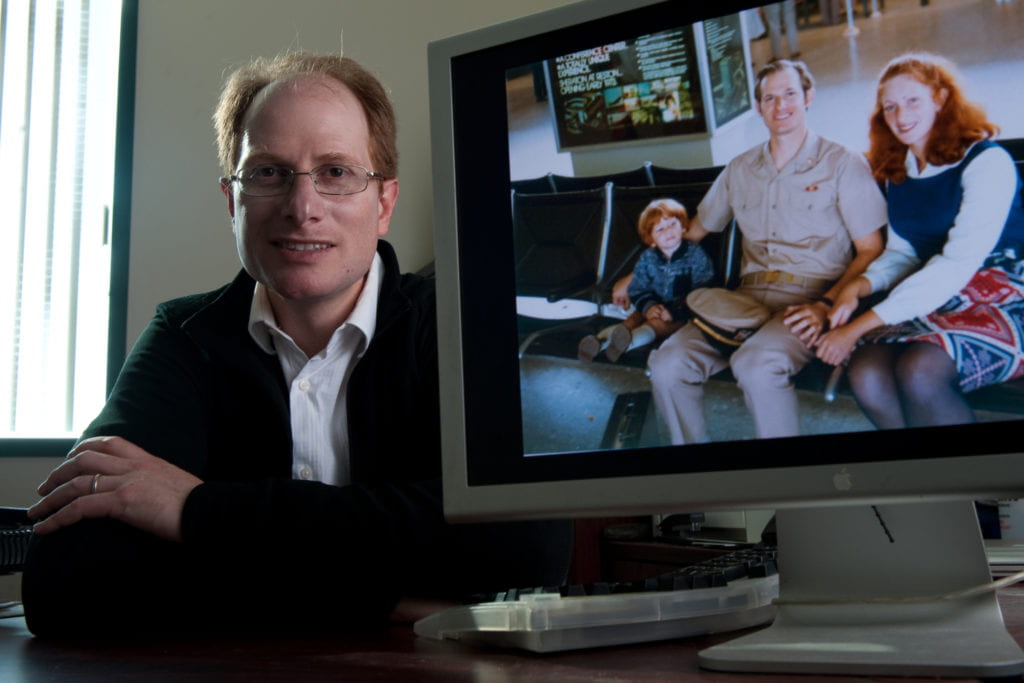Sweat, tears lead to breakthrough
Chemist Greg Weiss’ personal loss motivates major new scientific work by him and others.
Greg Weiss wears a big, old-fashioned watch on his left wrist that no longer marks ordinary time. It belonged to his father, a tumor surgeon who died of cancer himself. In large measure, that loss is what keeps Weiss ticking.
“It was right at the end of my postdoctoral work,” recalls the UC Irvine chemistry professor. “I got that terrible phone call where he told me that he was very sick, that he had stage IV lung cancer. It was incredibly painful.”
Like 25 percent of all lung cancer victims, Arthur Weiss never smoked, and – like many – his disease was diagnosed too late, with no known cause. It was agonizing for the younger Weiss, who loved his father and all he represented as a former Navy doctor.
“My parents told me that service – helping people – is the most important thing you could possibly do,” he says.
Eleven years later, Greg Weiss’ red hair is thinning, but he bounces through UCI’s science and medical buildings with verve. He’s part of an interdisciplinary team of chemists, physicists and biologists working in nanobiotechnology, coupling atomic-level electronics with cutting-edge disease research. His aim is simple: to find cancer and other killers as early as possible.
“Detecting a single cancer cell – that’s the goal,” Weiss says. “It would be something like a home pregnancy kit, but for diseases. I want to know if we can test people every day for cancer markers. I think that would be really cool.”
He and fellow researchers have made major strides toward that end, with findings published in the Jan. 20 issue of Science.
Capping years of work, they tethered a protein found in human teardrops to the world’s smallest electronic circuit and discovered exactly how it destroys dangerous bacteria in the eyes.
“The circuits are molecule-sized microphones,” explains associate professor of physics & astronomy Philip Collins, who co-led the project with Weiss. “It’s just like a stethoscope listening to your heart, except we’re listening to a single molecule of protein.”
They hope that in the next five to 10 years the novel technology can be refined to detect cancer molecules. The research could also foster the development of new cancer-fighting drugs.
“This is a really big step because it works very well, it’s robust, and I think a lot of other labs can apply it too. We harnessed a single protein molecule, which is a pretty complicated structure. If we can use the same technology to detect single cancer molecules, then that means we’d be able to find it extremely early,” Weiss says. “That would be very exciting, because we know that if we treat cancer early, patients will be cured much faster, and costs will be much less.”
He praises postdoctoral fellow Yongki Choi and doctoral student Issa Moody for working long hours on the project. Choi, in fact, solved a key problem that had stymied progress by finding a reliable way to attach the foot of the molecule to the nanometer-scale microphone.
Moody has heard Weiss mention his father’s death only in passing. What strikes him about his mentor is the opposite of grief. “What’s really great about Greg is his enthusiasm. We’ve been trying to do this for years, so you can imagine you get pretty frustrated,” he says. “I don’t think I’ve met a professor as excited about science as Greg is. He’s awesome. And it finally came together. ”
Weiss credits his mother, a schoolteacher, for sparking his love of science when he was 7. She showed him a periodic table of elements and told him it contained everything in the universe. But his daily motivation comes from the loss of his father.
“It drives me, absolutely,” Weiss says. “It reminds me that there’s a human dimension to this. What we do in the laboratory can alter people’s lives. I hope to spare other families the anguish mine went through. That’s my dream.”

